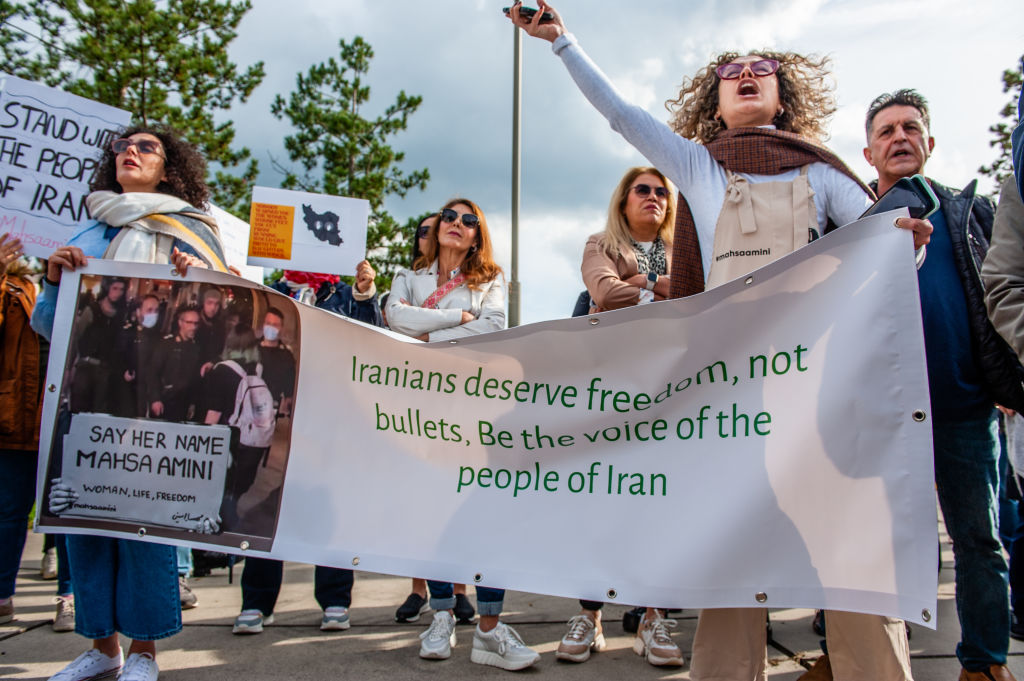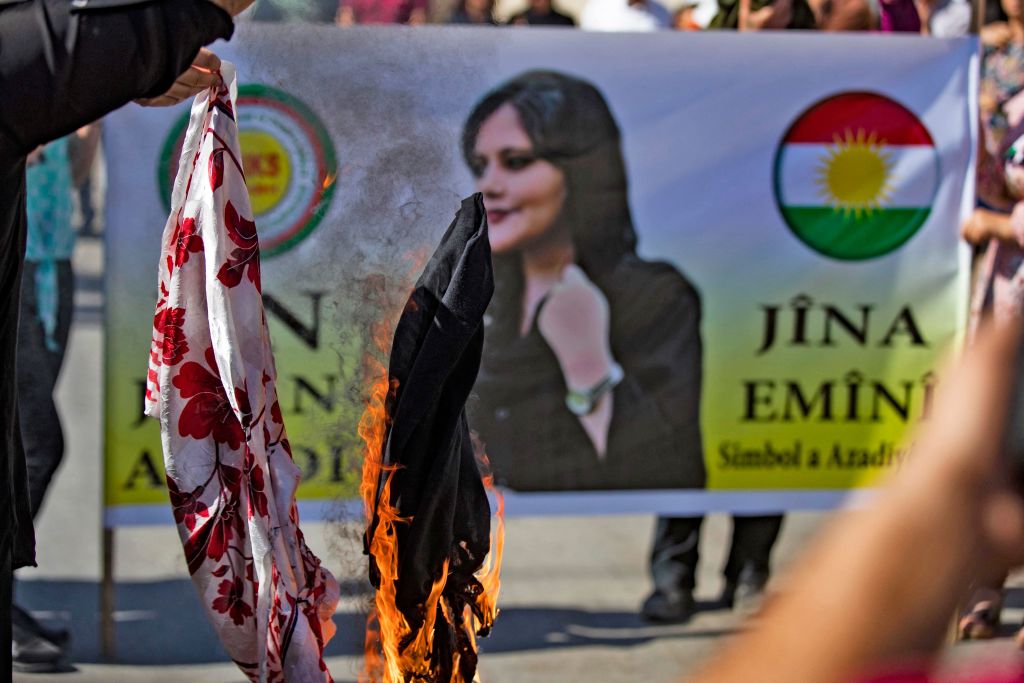
As a child growing up under the Islamic Republic, women would often say to me and my girlfriends, “If you hurt a man’s feelings, there will be consequences.” They wanted us to understand that our safety could only come from making a man feel good about himself, not from developing our own talents and potential. I learned never to make any male feel rejected, even down to my brother’s friends in the neighborhood.
So the first time I read Margaret Atwood’s quote from The Handmaid’s Tale—“Men are afraid that women will laugh at them. Women are afraid that men will kill them”—I felt it deeply in my bones.
Much has been written about the Iranian revolution, one of the inspirations for Atwood’s novel—yet people still underestimate the extent to which control of female sexuality was and still is at the heart of what keeps the Islamic Republic going. The struggle we are seeing in Iran right now over the compulsory headscarf is not just one issue in Iranian politics; it is the issue. If the headscarf falls, so does the government.
The Islamic Republic’s existence depends on controlling women because this is also how they control men. The generation of 1979 channeled all its rage and feelings of impotence about the shah’s secret police and its execution of political prisoners into an obsession with female sexuality. The new government created youth camps and leagues that taught young men to find self-esteem in pacifying and disciplining their wives and daughters. If these men now fail to restrain female sexuality, who will support a government that has otherwise done nothing for its people, economy and society?
As a kid, I watched boys my age learn that their “honor” came from how well they could assert dominance over a woman. After the revolution, boys I’d played soccer with for years suddenly displayed contempt toward me. My stepfather, embarrassed by my mother’s prestigious job at Revlon, asked her to quit and started gifting her headscarves instead of flowers and perfume. What started for Iranian men with an obsession over hair became a fixation on the sight of any skin: a feminine ankle or a wrist. It was only a matter of time before that translated into punishment. “An eye for an eye” came to mean, “Male lust demands violence against female beauty.”
The message was always: If you make us feel something we can’t control, we will disfigure you.
Recently, doctors in Iran have been reporting a surge in women being treated for gunshot wounds to the genitals and eyes. One physician quoted in The Guardian said he believed the Islamic Revolutionary Guard Corp is purposely targeting women in this way, “to destroy their beauty.”
This kind of violence is not new. As a teenager, I saw the morality police throw acid in women’s faces. My own friend Neda was forced to wipe off her lipstick with a wad of cotton filled with crushed glass. The message was always: If you make us feel something we can’t control, we will disfigure you.
People forget that Mahsa Amini, the 22-year-old Kurdish woman killed at the hands of the morality police, was actually wearing a hijab. Yet in the wake of protests following her death, President Raisi took the opportunity to pass an order further expanding hijab laws to include social media, so that now anyone caught without a headscarf on their profile pictures can be arrested. He was saying, in no uncertain terms, that Amini’s death wasn’t about police brutality, but about women being responsible for the violence of men.
People still underestimate the extent to which control of female sexuality was and still is at the heart of what keeps the Islamic Republic going.

This domination of women is not fundamentally about religion. Take the case of Masih Alinejad, an outspoken female journalist who has survived numerous attempts on her life. Alinejad faces misogynistic online harassment not just from supporters of the Islamic Republic, but from male and female secular supporters of the shah, who routinely call her “loud,” “opportunistic” and “bitch.” Her attackers cling to an outdated belief system that sees male dignity as dependent on keeping smart women quiet.
The young men and women protesting in Iran today are not just fighting an Islamic regime. They are fighting their fathers’ and brothers’ passive agreement with the idea that female sexuality must be controlled. Educated by the Internet and its profusion of innovative ideas about gender, this new generation refuses to be bystanders to the abuse of women. For these brave young people, the slogan “Woman, Life, Freedom” doesn’t represent three ideas, but rather one: Only in a world that truly respects women can liberty prevail.
Up next:
U.S. democracy is at a dangerous inflection point—from the demise of abortion rights, to a lack of pay equity and parental leave, to skyrocketing maternal mortality, and attacks on trans health. Left unchecked, these crises will lead to wider gaps in political participation and representation. For 50 years, Ms. has been forging feminist journalism—reporting, rebelling and truth-telling from the front-lines, championing the Equal Rights Amendment, and centering the stories of those most impacted. With all that’s at stake for equality, we are redoubling our commitment for the next 50 years. In turn, we need your help, Support Ms. today with a donation—any amount that is meaningful to you. For as little as $5 each month, you’ll receive the print magazine along with our e-newsletters, action alerts, and invitations to Ms. Studios events and podcasts. We are grateful for your loyalty and ferocity.





